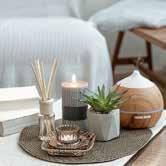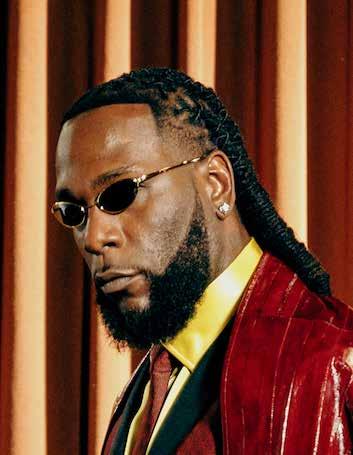

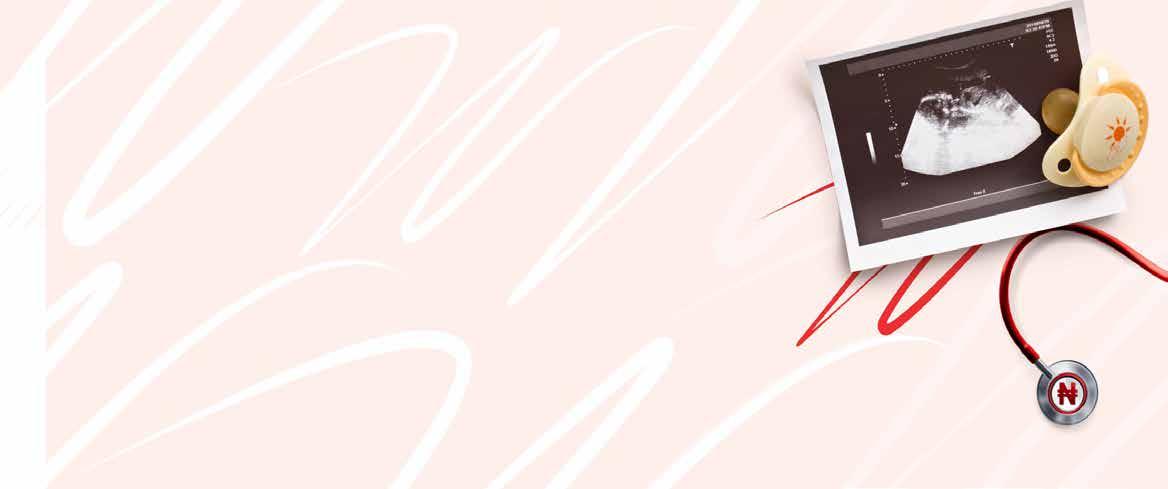




Burna Boy doesn’t just show up — he takes up space. And at this year’s Met Gala which took place at the Metropolitan Museum of Art, New York with the theme Superfine: Tailoring Black Style, that space was tailored, powerful, and unmistakably African. Dressed in a striking custom creation by Ozwald Boateng, Burna brought the essence of Black elegance to life through fabric and, cut and presence. He looked like royalty. He moved like purpose. For him, it wasn’t just about looking good. It never is. Whether it’s music, fashion or presence, Burna plays the long game — every move deliberate, every statement layered
From Port Harcourt to Paris, Lagos to London Stadium, Burna Boy’s rise hasn’t just been meteoric — it’s been transformative. With his genrebending sound that fuses Afrobeat, dancehall, reggae, and hip-hop, he’s carved out a space that no one else can occupy.
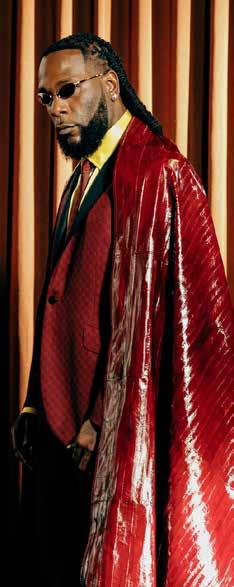
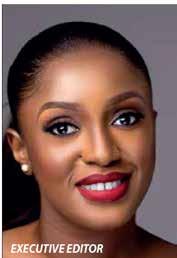
ver the past week, the global fashion conversation was focused squarely on one event—the Met Gala. Year after year, it remains fashion’s biggest night, not just for the spectacle, but for what it represents: where the industry is headed, who is at the centre of it, and what stories are being told through clothing. This year, it felt particularly affirming to see those stories include designers from Nigeria and Africa. Our creatives are no longer waiting to be invited to the global stage; they are showing up with their own narratives, aesthetics, and authority. It’s taken time to get here, and we remain thankful for the trailblazers—designers, stylists, editors, and artists— who kept building in an industry that didn’t always take them seriously.
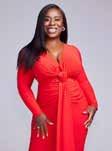
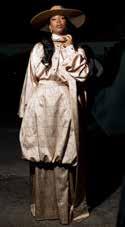

Nigerians Who Are Shaping Global Culture
Weekend Looks That Turn Heads Without Trying Too Hard
Your 30s and Nigerian Dating Culture: What No One Tells You


Today, the lines between fashion and entertainment are increasingly blurred. The two worlds have become intertwined, with celebrities often acting as ambassadors for cultural identity and style. It’s encouraging to see that within these global intersections, African talent is no longer peripheral. Our designers are part of the main event. It also forces us to think about how far the creative industry has come, particularly here at home. There was a time, not long ago, when creativity wasn’t viewed as a viable career path. It was something you did “on the side”—a hobby at best. But that perception has shifted. The article, Is Creativity the New Currency?, explores this evolution and why, in today’s world, ideas and originality can hold as much value as traditional degrees. The creative economy is growing, and it’s changing lives. Fashion, film, photography, digital content, and even styling are now serious industries; thankfully, the rest of the world is beginning to understand that too.
Closer to home, the AMVCA, our version of fashion’s biggest night, took place yesterday. And as expected, the stars of Nollywood delivered a red carpet that held its own. Beyond the awards, the real competition for many viewers was sartorial. Who wore what? Who understood the brief? Who didn’t? The fashion at the AMVCA continues to evolve, with more designers being bold in silhouette, styling, and structure. What we’re seeing now is not just red carpet dressing—it’s the deliberate use of fashion as storytelling. We will be breaking it all down in next Sunday’s issue: the hits, the misses, and the designers behind the moments that got people talking. For those who want an early look or a few exclusives, follow us on Instagram @thisdaystyle. It’s the easiest way to stay connected with the conversations shaping our industries in real time.
As fashion continues to globalise, it’s important we continue to document this moment, when Africa isn’t just participating in the culture, but actively shaping it.


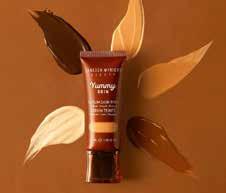

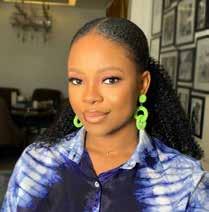

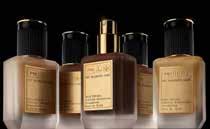
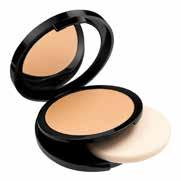

There’s something deeply satisfying about a bold red lip, a perfectly carved brow, or a sharp contour that could cut glass. But there’s also something quietly powerful about walking into a room looking like you—only glowier, fresher, more rested, and like you just woke up looking that way. That, my friends, is the magic of the nomakeup makeup look.
It’s not a new trend, but it’s definitely one that has evolved. From runway models in fresh, dewy skin to the rise of “clean girl” beauty on TikTok, there’s a global obsession with looking effortlessly polished without the heavy layers. Here in Nigeria, where humidity, traffic, and life happen daily, more women are ditching the full beat and embracing a simpler, more breathable kind of beauty. And no, it doesn’t mean looking plain—it means mastering the art of enhancing, not masking. So, what exactly is the no-makeup makeup look? Think glowing skin, natural brows, a hint of blush, and just enough product to make people wonder if you woke up flawless or if it’s just good genes. The trick lies in products that work double duty and a technique that says, “I tried, but not too hard.”
The rise of skin-first beauty routines has been bubbling for years but exploded during the lockdowns. With fewer outings, virtual meetings, and everyone taking a long hard look at their faces on Zoom, many began to value healthy, breathable skin over layers of foundation. Skincare became a ritual, not a chore.
But even as the world opened up again, the lowmaintenance glow-up stayed. Let’s face it: not every Lagos girl has the time to blend three concealers before her 8 a.m. meeting or wedding owambe. So, a routine that gives your face, but better, is the sweet spot between ease and elegance.
THE STAPLES OF THE NO-MAKEUP LOOK
1. Skin First, Makeup Second
This look starts with skincare. Think hydrated skin, gentle exfoliation, and a great moisturiser. For Nigerians, where heat and oil are real players, lightweight gel moisturisers and sunscreen (yes, every day) are crucial. The goal is to get your skin looking good enough that you need less to cover it.
2. A Skin Tint or Lightweight Foundation
Ditch the full coverage for something that lets your skin breathe. A skin tint or BB cream with SPF can blur imperfections while keeping things natural. Dab a bit on the centre of your face and blend outwards—don’t paint your whole face.
3. Cream-Based Products
Cream blushes, bronzers, and highlighters melt into the skin and give that lit-from-within vibe. A rosy tint on your cheeks can also double up on your lips for that just-bitten look. It’s giving “I drink water and mind my business.”
4. Feathery Brows and Light Lashes
Instead of carving your brows like you’re going to war, try brushing them up with a clear or tinted brow gel. Fill in only where needed. For lashes, a single coat of mascara or a lash lift gives definition without drama.
5. Gloss or Balm Over Matte Lips
Matte lipsticks have their place, but nothing says “I woke up like this”, like a tinted balm or gloss. It hydrates, adds a kiss of colour, and makes lips look plumper and more youthful.
N.B -
Perhaps the biggest win with this look is the confidence it builds. You start to get comfortable with your own face again. The pores. The laugh lines. The real skin. You realise you don’t need ten layers to be beautiful. You just need the right amount to feel like you, only better. And on those days you do want to go full glam,you can indulge regardless. It’s a choice—not a necessity. That’s real beauty power.
There’s a quiet revolution happening—not with banners and protests, but through music, fashion, literature, technology, film, and art. And at the centre of it all? Nigerians. With roots grounded in culture and wings that span across the globe, these individuals are redefining what it means to be influential in a global world. They’re not just occupying space—they’re owning the moment and rewriting the rules. From Brooklyn boardrooms to Parisian galleries, the Nigerian energy is shaking things up. Here are a few of the trailblazers turning global culture into Naija’s canvas.

The Global Rock Star
Port Harcourt-born and Grammy-winning Burna Boy didn’t just break into the global music scene—he kicked the door down. Fusing Afrobeat with reggae, hip-hop, and highlife, he’s brought a distinctly Nigerian sound to the world stage. With four albums topping the UK charts, soldout stadiums in Europe, and collaborations with everyone from Beyoncé to Ed Sheeran, Burna is proof that Afrofusion isn’t a trend—it’s a movement. And Burna? He’s the face of it.

The Nigerian Greek Freak
Giannis may wear Greece’s colours on the court, but his name, his roots, and his hustle are unmistakably Nigerian. Born to a Yoruba immigrant in Athens, the NBA superstar rose from selling goods on the street to leading the Milwaukee Bucks to championship glory. With two MVPs and a ring under his belt, Giannis is rewriting the immigrant success story—and doing it with Naija pride in every slam dunk.

DAVID OYELOWO
The Noble Storyteller
David Oyelowo’s roles are as rich and layered as his Yoruba heritage. From portraying Martin Luther King Jr. in Selma to royalty in A United Kingdom, he’s carved a niche for dignified, purposeful storytelling. But beyond Hollywood, he’s a force for good—funding scholarships for Nigerian girls and advocating for Black creatives in film. With an OBE on his chest and Nigeria in his heart, David is every bit the global griot.

The Voice of a Generation
If words were weapons, Chimamanda’s would be precision-cut diamonds. From Purple Hibiscus to Americanah, her novels have sparked global conversations about identity, race, womanhood, and post-colonialism. Her TED Talk, The Danger of a Single Story, remains one of the most-watched in history. With her latest release, Dream Count, rekindling the literary fire, she remains not just a writer—but a cultural oracle. Nigerian to her core, she continues to straddle Nigeria and the global stage with intellect, elegance, and power.
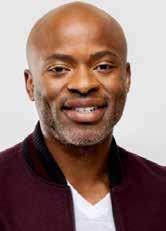
The Tech Billionaire
Born in Lagos, Tope Awotona turned scheduling chaos into a billion-dollar idea. As the founder of Calendly, he built one of the world’s most-used productivity tools, powering meetings from Nairobi to New York. Selffunded at first, his journey is a masterclass in resilience—rising from failed ventures to building a $3 billion empire. Today, he’s one of the wealthiest Black tech founders in America, with a quiet Nigerian tenacity driving every move.
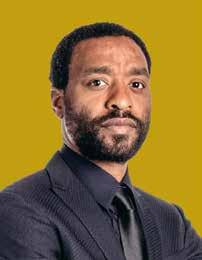
The Quiet Powerhouse
British-born with Nigerian Igbo heritage, Chiwetel has one of the most commanding presences in film. His role in 12 Years a Slave earned him an Oscar nomination, while his performance in The Boy Who Harnessed the Wind introduced new African narratives to the mainstream. Deeply philanthropic, he supports healthcare and education in Nigeria, proving that impact off-screen matters just as much as the applause.

The Game Changer
In 2023, Rena Wakama became the first woman to coach Nigeria’s women’s basketball team to AfroBasket glory. Then she took them to the Paris 2024 Olympics, making history by leading D’Tigress to the quarterfinals—the first African basketball team, male or female, to do so. At just 31, the former playerturned-coach is inspiring a new era of sports leadership, proving that Nigerian women don’t just play the game—they redefine it.

The Artistic Disruptor
With flamboyant style and a mind like a museum, Iké Udé is art in motion. Known for his Sartorial Anarchy self-portrait series and his iconic magazine aRUDE, the Lagos-born, New York-based artist fuses photography, performance, fashion, and philosophy. He’s featured in the Guggenheim, the Smithsonian, and Vanity Fair’s Best Dressed List—not once, but thrice. Iké doesn’t just photograph culture—he creates it.

The Provocateur Artist
There’s nothing subtle about a Yinka Shonibare installation— and that’s the point. Through his headless mannequins dressed in Ankara, the British-Nigerian artist confronts colonialism, identity, and class. His work hangs in Tate Modern and the Met, but his impact reaches beyond galleries. Through the Yinka Shonibare Foundation in Lagos and Ogun State, he’s mentoring the next generation of African creatives. For Yinka, art is activism—and Nigeria is always in the frame.

Uzo
OLAMIDE OLOWE
The Skincare Mogul
At just 26, Olamide Olowe redefined beauty standards with her brand Topicals. Targeted at treating hyperpigmentation and chronic skin conditions, the Nigerian-American entrepreneur raised over $10 million in venture capital, becoming the youngest Black woman to do so. Topicals is more than skincare—it’s a cultural reset, blending clinical formulas with community-first conversations.

hearts and Emmys. In Mrs. America, she brought Shirley Chisholm’s legacy back to life. The NigerianAmerican actress also champions African causes through Heifer International and Angel City FC, using her platform to empower. Her Nigerian identity shines in everything she touches—from activism to red-carpet elegance.
No one really prepares you for dating in your 30s in Nigeria. Not your parents. Not your best friends. Not even the internet, with all its memes and hot takes. There’s an unspoken shift that happens once you cross that 30-year-old threshold, and suddenly, dating is no longer just a game of butterflies and banter. It becomes something else — layered, loaded, and occasionally laced with small doses of panic. Your 20s were messy but hopeful. You could date someone just because they had good teeth or shared your love for Asa’s Jailer. You could talk on the phone till 2am, dissecting random dreams, and go on impulsive dates without overthinking. There was still time. There was still grace for mistakes. But in your 30s, something changes.

First of all, the pressure is LOUD
Whether it’s your mum side-eyeing your ringless finger at Christmas or the subtle (and not-sosubtle) comments from married friends who now refer to you as “our single friend,” there’s a societal megaphone reminding you that the clock is ticking. It doesn’t help that in Nigeria, where everyone knows someone who married at 25 and has three children by 30, there’s an unspoken expiry date on romantic potential — especially for women. Never mind that your career is thriving, your skin is glowing, and you finally know how to say no to nonsense. The only thing people seem to notice is your marital status.
or going Dutch? Is he intimidated by your financial independence? Is she more interested in your income than your intentions? These are real questions — especially in a country where gender roles, expectations, and financial realities are constantly being negotiated.
T he truth is, dating in your 30s in Nigeria is a full-time emotional sport. It requires stamina, clarity, and sometimes a thick skin. But it also offers a kind of maturity that’s oddly beautiful. You’re less concerned with games and more focused on peace. You ask better questions, communicate better, and recover faster from disappointments. You no longer confuse chaos for passion. You know when to walk away. You know when to stay. What no one tells you is that it’s okay to feel disoriented. It’s okay to be single at 33 while everyone else is posting pre-wedding shoots. It’s okay to start over. It’s okay to want more — and not settle because of pressure from a culture that often prizes timelines over truth.


here was a time, not too long ago when Nigerian parents would flinch at the word “creative.” It was code for “jobless.”“You want to become what? An actress?” Cue side-eye. The gold standard was a respectable career—law, medicine, banking, or at the very least, a nine-to-five with a pension. Creativity was nice, sure, but only as a hobby. Fast-forward to today and something seismic has shifted. Being creative is no longer just a cool party trick—it’s economic power. Real power.
Scroll through your Instagram feed, open TikTok, glance at your WhatsApp status updates—what do you see? Nigerians designing clothes that make it to International Fashion Weeks and Red Carpets. Lagos-based visual artists getting commissioned internationally, and skit makers sealing multimillion-dollar endorsement deals. A YouTube channel hits 1 million subscribers. A hairstylist goes viral for “melting lace” so perfectly that even Auntie Ngozi asks for her handle. This is not a coincidence. This is the rise of creativity as currency.
We live in a country where traditional pathways to success are becoming increasingly narrow. The oil money has slowed, the white-collar jobs are drying up, and the cost of living is rising faster than a Danfo driver’s temper in traffic.
But out of this chaos, Nigerians—resilient as ever—are building new doors where old ones have shut. And at the centre of that reinvention is creativity.
Let’s call it what it is: creativity is the new oil.
This generation—armed with smartphones, style, sass, and staggering levels of innovation—is cashing out. They are turning podcasts into brands, slang into merchandise, and opinions into sold-out masterclasses.
This is not to say that creativity is easy; far from it. The path is still filled with uncertainty, inconsistency, and the occasional imposter syndrome spiral at 2 a.m. But what has changed is perception. The creative economy is finally being taken seriously, not just by the creators but by corporations, investors, and governments. Brands now want content creators on their strategy teams. Politicians hire digital storytellers. Multinationals are tapping into Nigerian youth culture to sell everything from soda to cement.

Secondly, the dating pool starts to feel suspiciously like a recycled playlist. You open Instagram and see a guy you once dated now proposing to someone who suspiciously looks like you — just with fewer opinions. You go on a date with someone new only to realise he’s your friend’s ex, your cousin’s gym instructor, or worse, your colleague’s “situation-ship.” Lagos, Abuja, Port Harcourt — even the big cities start to feel like small villages when it comes to dating. Then there’s the reemergence of the exes. The ones who suddenly remember how “amazing” you were after four years of ghosting. In your 30s, you’ll be amazed how many men
circle back with the audacity of a lost Uber driver: “Hey stranger,” they text, hoping your new boundaries have somehow melted in the face of nostalgia.
Let’s not forget the paradox of choice and exhaustion. You want someone emotionally intelligent, ambitious, kind, funny, God-fearing, self-aware, hygienic, and ideally over 5’10”. But the more you date, the more you realise how rare it is to find someone who checks half those boxes and isn’t emotionally stunted. You begin to understand why your aunt said, “Just find someone who has sense and peace of mind. The rest you can manage.” But should you have to manage? Isn’t that what your 20s were for? And yet, you’re not the same person you were then. Your standards have evolved. You’ve done the inner work. You’ve sat with your therapist and asked yourself hard questions. You’ve learned the difference between attention and intention, between consistency and intensity. You’ve also realised that loneliness is not a good enough reason to accept bare minimum energy wrapped in love bombing.
Dating in your 30s isn’t easy, but it’s real. It’s vulnerable. It’s thoughtful. And sometimes, if you’re lucky, it’s magical. So here’s to those navigating love in this confusing, chaotic, but ultimately hopeful chapter — with soft hearts, sharp minds, and a refusal to settle for anything less than what feels like home.
And then there’s also the money talk. In your 30s, dating is not just about chemistry — it’s also about compatibility in lifestyle and values. Who’s paying for dinner? Are we splitting bills

And let’s not even get started on fashion and music. Nigerian designers are being courted by global celebrities. Our music is not just traveling—it’s taking over. You can hear Afrobeats blasting in a bar in Mexico City. Fashion stylists are now making six figures just for “curating vibes.” Even the act of tweeting is now monetisable. We are, quite literally, making money off our imaginations.
But beyond the money, what creativity gives is agency. It gives you the ability to rewrite your story and design your life. In a country where structure often fails, creativity becomes a tool for survival and selfdefinition. It’s why a boy in Mushin can become a globally recognised animator. Why a girl in Aba can turn thrifted clothes into a luxury fashion label. Why someone with a cracked phone can start a beauty vlog that lands her a skincare endorsement.
And yes, we must talk about the hustle. Because creativity in Nigeria doesn’t just require talent—it demands grit. You’re not just a writer, you’re your own publicist. You’re not just a designer, you’re also the delivery guy. You’re constantly pitching, packaging, promoting—because the ecosystem is still growing, still figuring itself out. But that, in a way, is the beauty of it. There are no rules. No one path. You just start—and keep going. It’s also why young Nigerians are rethinking what “work” even means. The office is now digital. The resume is a portfolio. The elevator pitch is your bio. And while the world debates the future of work, we’re living it—in real time, with real Wi-Fi struggles.
But it’s not all rosy, of course. There’s the issue of sustainability. Can creativity pay your rent consistently? Can it put food on the table, fund retirement, build generational wealth? Not always. Not yet. That’s why we still need better policy, more grants, infrastructure, and institutional support. The creative industry in Nigeria is rising, but without structure, we risk burning out our best talents before they fully blossom.
Still, even with these challenges, one thing is clear: creativity is no longer a “plan B.” It’s the main plan. It’s no longer “just vibes”—it’s the business model. Finally, Nigeria is learning that creativity is fuel.
And if you’re still underestimating it, well—you’re already late to the future.



There are few things more satisfying than walking out of a beauty treatment feeling like the main character in your own movie. The glow, the bounce, the subtle lift in your spirit. But here’s the catch: not every beauty treatment lives up to the hype, and in a world filled with overpriced facials and buzzy skin fads, it can be hard to separate indulgence from actual investment. So, what’s actually worth the splurge? Which treatments deliver long-term results, and which are just good for a cute selfie on your story? Whether you’re prepping for a big event, trying to reset your skin, or just looking for a little self-love in the form of pampering, here’s the no-fluff list of beauty treatments that deserve your hard-earned money—and your time.
We’re not talking about your average steam-and-squeeze facial here. Medical-grade facials, often performed in dermatologist offices or med-spas, are customised to your skin’s exact needs. Think deep cleansing, chemical exfoliation, lymphatic drainage, and hydration infusions— all using high-potency ingredients you can’t buy over the counter.

Treatments like HydraFacial, Jet Peel, and geneO+ are not only ultra-satisfying but also deliver noticeable results: smoother texture, tighter pores, and that glass-skin glow people chase filters for. One session might cost a small fortune, but it’s cheaper than cycling through ineffective skincare products every month. And your skin? It will thank you.
FACIALS, PEELS AND BEAUTY BARS: WHAT
out snatched and sculpted—with baby-soft skin to match. Celebs swear by it, and honestly? They’re not wrong.
5. Brow Lamination & Lash Lifts

Let’s end on a high-maintenance move that delivers low-maintenance results. Brow lamination (the process of setting your brows in place for a fluffy, lifted look) and lash lifts (a semi-permanent curl and tint for your lashes) might seem like minor details, but they make a major difference. Together, they shave off ten minutes from your morning routine and make you look effortlessly put together—even on makeup-free days. No need for extensions, powders, or brow gels. It’s subtle luxury, but luxury nonetheless.
6. LED Light Therapy
In Nigeria, events aren’t just events—they’re fullblown fashion championships, and if you’re not dressed to be remembered, you might as well have stayed home. From weddings to burials, concerts to thanksgivings, every gathering is a silent runway, and the dress code? Loud. Fashion in this part of the world doesn’t whisper—it announces. Your outfit is your resume, your mood board, your invitation and your mic drop. And in true Naija spirit, the goal is simple: look like money, move like power.
“DRESS TO OPPRESS: THE UNWRITTEN STYLE CODE OF NIGERIAN
By Funke Babs Kufeji
Let’s decode how to serve looks that’ll have people whispering your name long after the event ends.
THE WEDDING (AKA THE RUNWAY WITH FOOD)
This is where the fashion Olympics truly begin. The Aso Ebi uniform is just the starting point; the real game is in the execution. For women, go bold with structured corsets, exaggerated sleeves, and slits that stop traffic. Velvet, silk, or richly beaded lace? Yes, please. And don’t you dare forget your gele—because a look isn’t complete without a crown. For men, the agbada must be wide, the embroidery rich, and the confidence louder than the music.
Main Character Tip: Remix the Aso Ebi. Add unexpected textures or a pop of colour to stand out without breaking tradition.
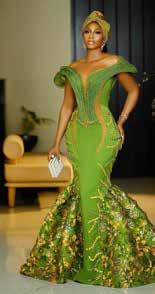

THE CONCERT/ RAVE (STYLE MEETS SWEATPROOF)
The term “chemical peel” still scares people off, thanks to horror stories from the 90s and images of red, peeling faces. But modern peels are much gentler and more sophisticated. There are light, medium, and deep peels targeting issues like hyperpigmentation, acne, texture, or dullness. A series of properly spaced, clinic-grade peels (like glycolic, lactic, or TCA) can completely resurface your skin, boost collagen, and even help with stubborn melasma or sun damage. This is especially useful if you live in places with intense sun exposure or pollution, where skin easily becomes congested or blotchy.
If you’ve ever wondered what it’s like to lie down and bathe in light like a plant, this is it—but with more skincare benefits. LED light therapy uses specific wavelengths (blue, red, and near-infrared) to target acne-causing bacteria, reduce inflammation, and stimulate collagen production.

3. Microneedling (aka Collagen Induction Therapy)
It’s painless, relaxing, and incredibly effective as a boost to your regular skincare routine. Over time, it helps reduce breakouts, fade scars, and even out your skin tone. Bonus? It’s often added onto facials so that you can double up on the glow.

7. Laser Hair Removal
Even while jumping to Afrobeats, you must still be camera-ready. Women lean into edgy comfort—crop tops, cargo pants, combat boots. For men, streetwear reigns: distressed denim, jerseys, bucket hats.
Main Character Tip: Add one photogenic element—think glow-inthe-dark nails or reflective shades.
Pic - Tolu Bally
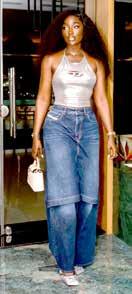

THE BURIAL (SUBTLE, BUT SHARP
Yes, it’s a solemn affair, but Naija still finds a way to make grief stylish. Stick to whites, blacks, or greys. Women should opt for tasteful lace or cotton gowns with minimal accessories—think quiet grace. Men should keep it clean with buba and sokoto, polished shoes, and impeccable grooming.
Main Character Tip: It’s all in the cut and fabric. A crisp outfit and understated jewelry show elegance without overstepping.
THE FAMILY THANKSGIVING (RESPECTFULLY FLY)

Yes, it involves tiny needles, but don’t run. Microneedling is a lowkey miracle for anyone trying to fade acne scars, reduce fine lines, improve skin texture, or just wake up a tired-looking complexion. By creating controlled micro-injuries to the skin, it stimulates collagen production and helps products penetrate better. Add PRP (aka the “vampire facial”) or a skin booster serum into the mix, and it becomes a regeneration party. The downtime is minimal—just a day or two of redness—and results can last months. It’s one of those treatments that gets better with consistency. Splurge-worthy? Absolutely.
4. Infrared Sauna & Lymphatic Drainage Therapy
This one’s for the wellness girls. Sometimes beauty isn’t just about your face—it’s how you feel from the inside out. Infrared sauna sessions detox the body through sweat, support skin clarity, and boost circulation, while lymphatic drainage (manual or machine-assisted) helps reduce puffiness and flush out toxins. Together, they’re a dream combo. You walk in bloated and blah, you walk

It might seem like a hefty upfront cost, but laser hair removal saves you time and money and ingrown hair trauma in the long run. Imagine never having to wax, shave, or tweeze again. Bliss, right? Targeting hair follicles with laser energy reduces hair growth permanently after a few sessions. It works best on dark hair and lighter skin, though new machines are increasingly safe for deeper skin tones. No more razor bumps, no more shaving cuts— just smooth, soft skin with zero maintenance.



You’re stylish, but your elders are watching. Women: peplum tops, flowy gowns, or Ankara sets that say, “I’m thriving, Auntie.” Men: clean danshikis or simple kaftans—no need to peacock, just polish.
Main Character Tip: Accessories elevate. A statement earring or sharp shoes can turn Sunday best into the star of the family photo.

THE CHURCH SERVICE (HOLY BUT HAUTE)
Modest doesn’t mean boring. For women, go for midi dresses, dramatic sleeves, or lace ensembles. Men, keep it classic with well-cut native wear or formal shirts.
Main Character Tip: Coordinated bags, pristine fabrics, and a perfectly tied gele say everything without saying too much.
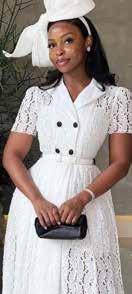
THE PARTY (THE HOT GIRL OLYMPICS)
This is your chance to play. Think sequins, feathers, satin, mesh—basically, no rules, just vibes. It’s less about what you wear and more about how confidently you wear it. For men, this is your moment to ditch the agbada and go street-luxe: oversized jackets, edgy sneakers, layered chains.
Main Character Tip: Wear something that starts conversations. Think LED nails, a bold neon bag, or an unexpected twist on a trend.

Burna Boy doesn’t just show up — he takes up space. And at this year’s Met Gala which took place at the Metropolitan Museum of Art, New York with the theme Superfine: Tailoring Black Style, that space was tailored, powerful, and unmistakably African. Dressed in a striking custom creation by Ozwald Boateng, Burna brought the essence of Black elegance to life through fabric and, cut and presence. He looked like royalty. He moved like purpose. For him, it wasn’t just about looking good. It never is. Whether it’s music, fashion or presence, Burna plays the long game — every move deliberate, every statement layered From Port Harcourt to Paris, Lagos to London Stadium, Burna Boy’s rise hasn’t just been meteoric — it’s been transformative. With his genre-bending sound that fuses Afrobeat, dancehall, reggae, and hip-hop, he’s carved out a space that no one else can occupy. But beyond the music, it’s the way he embodies culture — in how he dresses, how he speaks, how he performs, how he gives back — that continues to redefine what it means to be a global artist of African origin. In this exclusive conversation, he speaks on style, sound, storytelling, and standing tall in a world that once doubted him. From the creative process behind his Met Gala look to the depths of his new music, this isn’t just a fashion moment — it’s a full circle moment.
INTERVIEW BY KONYE CHELSEA NWABOGOR
Hey Burna, let’s start with the look — you pulled up to the Met serving tailored power. What was the process like working with Ozwald Boateng for this year’s Met Gala?
Working with Ozwald was deeper than fashion. It was a conversation about heritage, energy, and presence. From the jump, we weren’t trying to create something just for the red carpet—we were building something timeless. Every fitting was a dialogue, not just about how I’d look, but how I’d feel wearing it. Ozwald came with a vision that understood the importance of Black excellence and African elegance. We crafted something regal, something powerful. It’s not just a suit—it’s a statement.
The theme this year was “Superfine: Tailoring Black Style”. What did that mean to you personally, and how did you translate that into your look?
That theme spoke to me. Black style has always been


political, spiritual, and artistic all at once. It’s how we resist, how we shine, how we show up in the world. For me, it was about wearing something that told a layered story—one that started in Port Harcourt, travelled through London, Lagos, Jo’burg, and now stood on the Met steps. Let’s also remember that the theme for this year’s Mets draws a lot of inspiration from the SAPE movement in Congo. The tailoring, the choice of fabrics, the colours, everything was intentional. I wanted it to say: Black identity is global. It’s rooted. And it’s not asking for permission.
Why was Ozwald Boateng the designer you chose to bring this Met Gala look to life?
Ozwald has been telling the story of Black power through tailoring for decades. He doesn’t just design— he weaves legacy into fabric. For a moment like the Met, where designers must have a presence within the exhibition, the choice isn’t just about who you admire— it’s about who’s positioned to tell the story on that scale

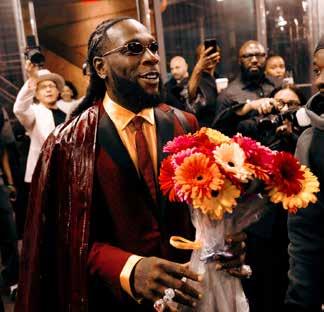
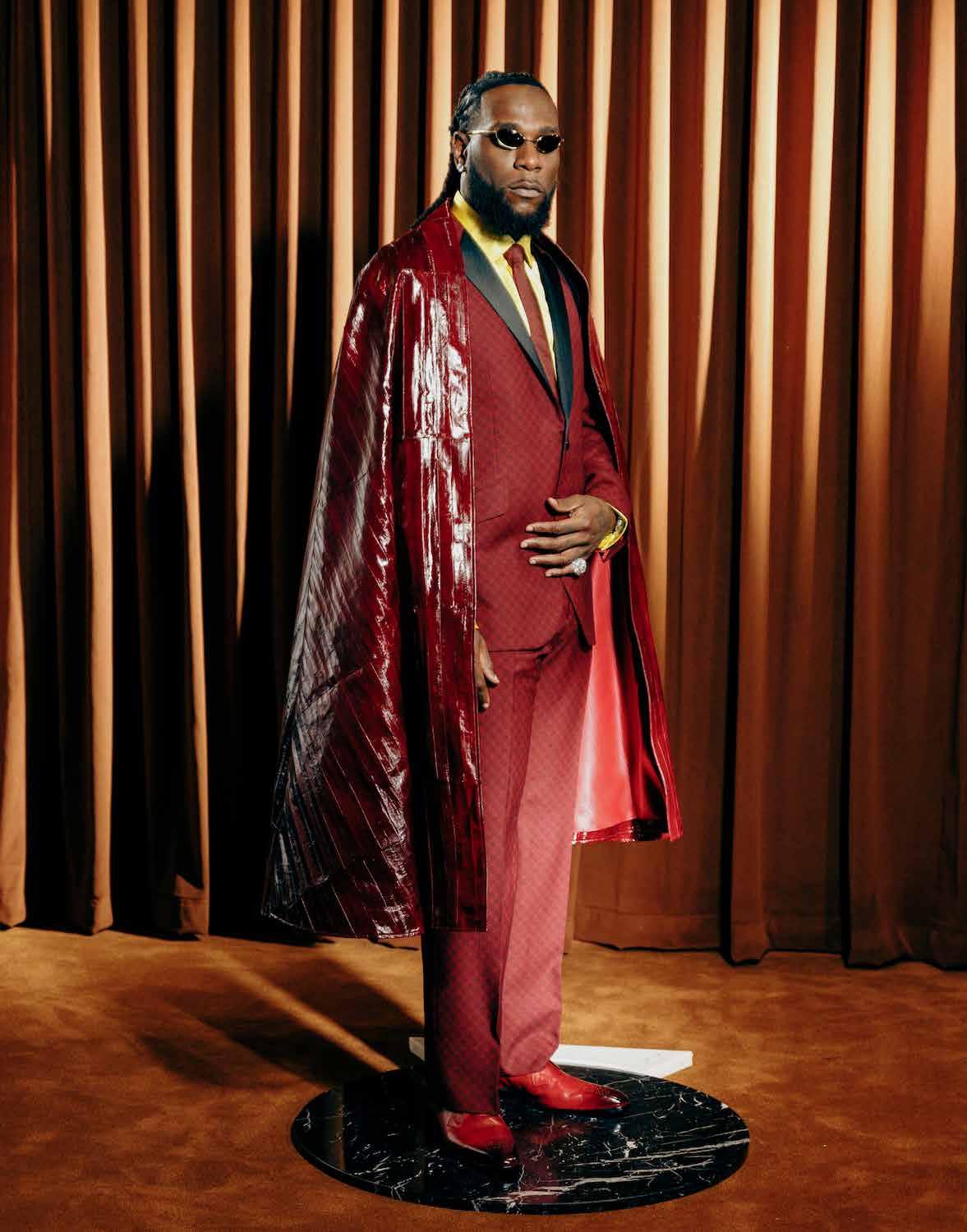
for this theme, this stage, and this message. Ozwald was the perfect fit. He carries Africa on his shoulders and delivers it with global precision. I knew he’d get it. And he did. What was the one non-negotiable detail you insisted on for your Met Gala outfit?
It had to feel like me. Not just look like me—feel like me. Powerful, “Way Too Big” Regal without being forced. And most importantly, rooted. That’s where the cape came in. The eel skin detail, the structure—it gave it weight. told Ozwald didn’t want a costume. I wanted character. He delivered that.
You’ve worn custom Burberry in the past — how was this look different in intention, feeling, or story?
Burberry was clean, sharp, very British elegance with a dramatic twist. It was a strong look, but this one? This was different. This had roots, Ozwald’s look felt like it carried more than fashion—it carried lineage. It had echoes of history in it. And walking in that look, I felt like I was carrying everyone who made me who I am.
Your style has become such a powerful extension of your artistry. How would you describe the Burna Boy aesthetic today?
It’s grown with me. These days, I’d say my style is rooted in fearless expression. wear what feels true to me at each specific point in time. Sometimes that’s silk, sometimes it’s prints or denim, but oftentimes it’s leather. My aesthetic now is regal, warrior-like, unapologetic, but not confined to any one definition. It’s balance. Grace and edge.
From Port Harcourt to the Met steps — that’s a serious journey. What does being at the Met Gala mean to you on a personal and cultural level?
Port Harcourt is a vibrant, fast-paced city — rich with culture, vibes, and ambition. I grew up in the middle of that energy, where tradition and grind live side by side. So standing on the Met steps, dressed in something that speaks to where I’m from, it’s not just fashion — it’s full circle. Personally, it’s a reminder that no matter where you start, you can end up anywhere. Culturally, it’s about presence. My entire career is about bringing our sound, our style, our identity into rooms we weren’t always expected to enter, talk less of speak & shine in. It’s about getting into those rooms on our own terms & converting everyone in the room into believers, believers in our story, our music, our culture, us.
Fashion-wise, are there any eras or African traditions you find yourself constantly referencing in your style?
Yes—Southern Nigeria etibo, woko & all their derivatives, Northern embroidery, Congolese sapeurs, and definitely Ghanaian kente traditions. But more than eras, I’m drawn to spirit. The spirit of kings, of warriors, of griots. When I dress, I want to carry that essence. It’s not about replicating the past. It’s about honouring it and reinterpreting it.
Would you ever consider collaborating with a Nigerian designer for a major moment like this in the future? If yes, who’s on your radar?
Definitely. I’ve already worn many Nigerian designers—my first Coachella performance, my first Grammys—I was dressed by amazing homegrown talent. It’s not new to me. Tokyo James, Kenneth Ize, Emmy Kasbit, Orange Culture… they’re not just making clothes, they’re telling stories. It’s always about alignment—the right moment, the right message. And when it lines up, it’s powerful. You’ll see more of that.
Let’s talk music — “No Sign of Weakness” is coming. What headspace were you in while recording it?
I was in a space of reflection and defiance. This album is personal. It’s not just vibes—it’s lessons, scars, triumphs & experimenting with genres outside the box. It reflects on how people misunderstand strength. Sometimes being silent is strength. Sometimes allowing yourself to be vulnerable is strength. No Sign of Weakness is about the strength in standing tall, even when you’re tired physically or emotionally.
What themes are you exploring in this new album that you haven’t touched before?
This album deals with identity & affirmation. Not just where I’m from—but who I’ve become because of it. There’s also a theme of perspective—how the world sees me versus how I see myself. I am a firm believer in the power of positive affirmation about yourself; am also more open to forgiveness, prayer, and healing. These past few years have brought a lot of triumphs, love, lessons, and revelations. All of this shows up in the music.
Would you say this new album marks the start of a new Burna era? Or is it more of a continuation of who you’ve always been?
It’s both. It’s like a new chapter in the same book. The message is still true to who I’ve always been, but the delivery has evolved. The sound is bolder in some ways, more stripped back in others. I’ve grown, and the music reflects that growth without trying to prove anything except that am here to stay.
Your sound has always been layered — Afrobeat, reggae, dancehall, hip-hop. How do you decide what sonic direction to go in with each new project?
I
don’t decide in advance. The music comes to me. let the message guide the sound. Sometimes, it needs drums from Lagos, sometimes samples

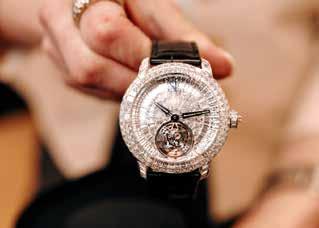

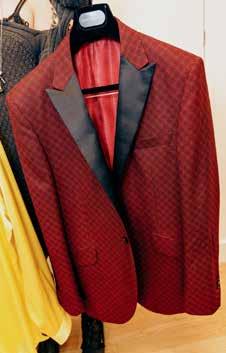

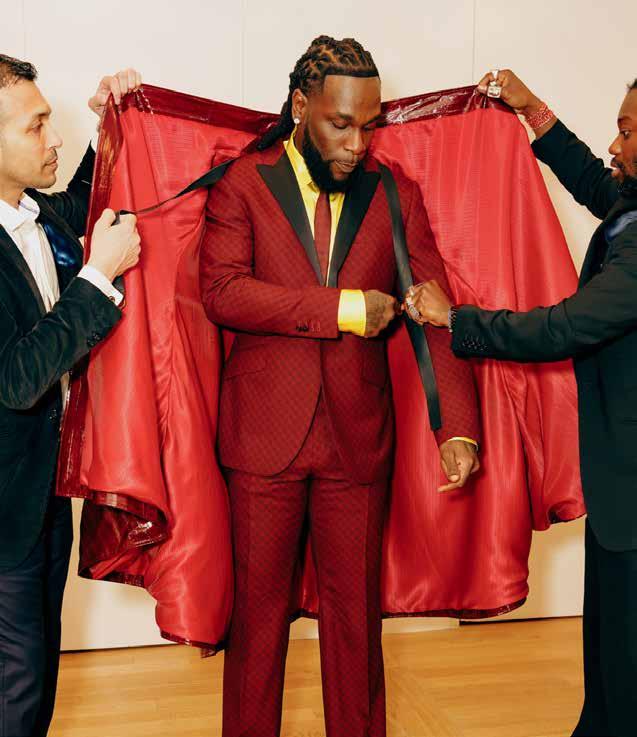
from London, and sometimes strings from Jamaica. It’s all about honesty. What does this song need to say? And what sound tells that truth best?
You’ve broken so many records — MSG, London Stadium, Accor Arena. What drives you to keep pushing past every limit? think the drive comes from my roots. I’ve seen what it means to have nothing. I’ve also seen what it means to have something and still feel empty. So I’m not chasing numbers—I’m chasing legacy. want to leave something that lives beyond the charts. That’s the real goal.Was there a moment when you realised — “I’ve actually become Burna Boy”? When did it hit you that you weren’t just playing locally anymore?
think the Accor Arena show in Paris was a moment. Seeing that many people who barely spoke English were singing back lyrics in Yoruba, Pidgin, and English, that hit differently. But even then, still feel like I’m becoming Burna Boy every day. The mission evolves, the limits get erased, we are still writing history & plotting the trajectory, refining, recreating the blueprint that my life & career have become.
You’ve become a cultural bridge — exporting African sounds and energy to global spaces. Does that ever feel like pressure?

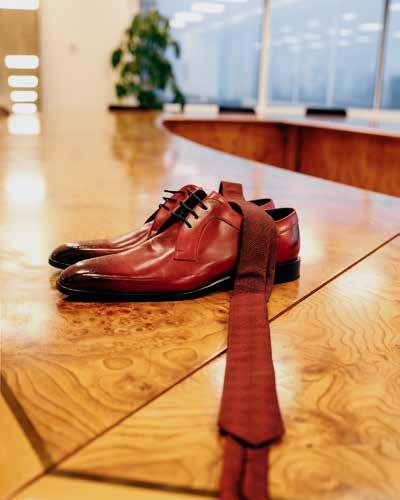
It’s pressure, but it’s also purpose. know represent something bigger than myself. When walk into a room, I’m bringing an entire continent with me. That carries weight, but it’s also my power. I’m not trying to water it down if anything, but want to keep making the bridge stronger so more of us can walk through it.
What do you think makes Afrobeats — or Afrofusion as you call it — so magnetic to the world right now?
It’s real. It’s rhythm and spirit. Afrofusion reflects life—joy, struggle, energy, roots. There’s a pulse in the music that people feel, even if they don’t speak the language. And now the world is finally listening with open ears. The music’s been here. What’s new is the attention.
There’s a lot of noise in the music scene right now. How do you stay grounded and ensure you’re still making honest, meaningful art? unplug, I don’t follow trends. make what feels right in the studio, not what’s moving on TikTok. also have a team and family that keeps me anchored. travel back home a lot, and that reminds me of why I started. If it doesn’t feel real to me, I don’t release it.
Your storytelling often feels raw and reflective. Is that intentional? Or is it just how you process life?
It’s just how live. I write what feel, what I’ve seen, what I’ve survived. don’t try to make it poetic or packaged. Life is raw—so the music has to be too. think that’s why people connect with it. It sounds like truth.
You’ve worked with artists across the globe — from Stormzy to Ed Sheeran. Who’s still on your wish list for a future collaboration?
A few legends are still on my list. Sade, Elton John, Eric Clapton, Adele, Sting, and Kendrick. Some are dreams, some are in the works. like working with people who bring soul to their art. I don’t chase names—I chase energy.
Looking back on your early projects like L.I.F.E, what do you think 2013 Burna would say to 2025 Burna?
He’d probably say, “You did it.” And also, “Don’t lose the hunger.” Back then, had fire in my chest and so much to prove. Now, I’ve proven it—but I’m still that guy inside, well maybe I am more high maintenance now, but still curious, still pushing, still hungry for the truth in the music & life.
Outside of music, you’re building a legacy — philanthropy, fashion, culture. What impact do you hope people will remember you for 50 years from now?
want to be remembered as someone who opened doors. Someone who spoke his truth and stood on it, built a bridge for reverse crossover, and crossed the world back to Africa—an artist who didn’t just entertain, but empowered. Whether through sound, words, or action, want my legacy to be strength and freedom for African people everywhere.
Social media often shows us the flashy side of success. What’s the side of your journey people rarely get to see?
The solitude. The nights when you doubt everything. The sacrifices. People see the lights and the wins, but they don’t see the losses and the internal battles. This life demands more than it gives sometimes—but I’ve learned to protect my peace, and stay close to my core.
How do you unwind when you’re not touring, recording, or attending high-profile events like the Met?
Silence and nature. spend time with my family. look for water, the beach, a river; I walk barefoot. I eat food that reminds me of home. And just be. The world moves fast, but try to slow down when can. That’s when hear myself best.
Finally, you have become a symbol of strength for a lot of young people. What’s something you still struggle with that might surprise your fans?
Letting go. hold on to things—pain, people, moments. Sometimes that’s where the music comes from. But I’m still learning how to release without regret, how to establish boundaries. I think strength is knowing when to hold on and when to walk away. That balance? I’m still figuring it out.
They say size doesn’t matter— but whoever said that probably wasn’t trying to squeeze their whole personality into a 12-by12-foot room. Whether it’s a shoebox studio apartment, a one-bedroom with barely-there square footage, or a spare corner you’ve claimed as your sanctuary, the truth is simple: small doesn’t have to mean boring. In fact, when done right, small spaces pack the kind of punch that sprawling mansions only wish they could. So, how do you turn a tiny space into a full-blown mood? It’s not just about cramming your favourite things into every available nook. Designing small spaces with big personality is about intention, creativity, and embracing the charm of “just enough.”
1. Start With a Vibe, Not a Theme
One of the easiest ways to breathe life into a small space is to define how you want it to feel. Forget matchy-matchy themes and Pinterest-perfect aesthetics for a second. What kind of energy do you want your space to give off? Warm and cosy? Minimal but bold? Eclectic and artsy? Once you know the vibe, every piece you bring in— from your rug to your lamp to that slightly unnecessary but totally fabulous mirror— should echo that mood. Personality isn’t always loud; sometimes it’s just you, fully realised in fabric and form.
2. Color Is Your Secret Weapon
Yes, white walls can make a room feel bigger. But do they make it feel you? Don’t be afraid to experiment with colour, even in a small space. A bold accent wall, vibrant upholstery, or an unexpected pop of mint green or ochre can instantly make a space feel alive. If you’re worried about going too bold, start with art or textiles. A bright throw pillow or oversized framed print can introduce colour without commitment.
3. Make Furniture Work Overtime
In a small space, your furniture needs to multitask harder than a Nigerian mum on a school morning. Think storage ottomans, nesting tables, foldable desks, or a couch that doubles as a guest bed. The trick is to choose pieces that do more than one thing—without looking like they’re doing too much. And don’t shy away from scale! A statement piece, like a plush armchair or dramatic light fixture, can anchor a space and give it character.
4. Go Vertical
When floor space is scarce, the walls become your new best friend. Floating shelves, tall bookcases, hanging planters— these are your ticket to more storage and more style. You’d be surprised how much personality you can express on a wall. Stack books, display your travel finds, and frame your favourite quotes. Suddenly, you’re not just decorating; you’re curating a story.
5. Let Your Quirks Lead
This is where the magic happens. Your grandmother’s china, a framed concert ticket, a teacup from your favorite antique store—these are the things that bring soul into a space. Don’t be afraid to let your quirks show. You don’t need a “perfect”



room. You need a room that makes you smile every time you walk in. Personality lives in the unexpected details.
6. Light It Right Nothing kills a space’s personality faster than bad lighting. A single overhead bulb is not a vibe. Layer your lighting: ambient lighting for mood, task lighting for function, and accent lighting for drama. Floor lamps, fairy lights, and even LED strips under a floating shelf can change everything. Plus, mirrors are your cheat code—they reflect light and make the room feel bigger and brighter.
7. Be a Bit Dramatic A small space is the perfect excuse to be bold. Try a deep navy wall in your tiny bathroom, hang a huge chandelier in your corridor, or go maximalist in a powder room. Because when the space is small, the risk feels lower—and the

payoff? High impact. These are the moments that make guests go, “Wait, this is your bathroom?”
8. Keep It Tidy, But Never Sterile Clutter is the enemy of small spaces—but over-sanitising a space can kill its vibe too. You want it to feel lived in, not like a showroom. Baskets and bins are your friend. They hide the chaos without killing the character. And edit often—if something doesn’t serve you or bring joy, let it go.

Have you ever walked into a perfectly styled home, admired the velvet couches, the curated artwork, the warm lighting… and still felt like something was missing? You can’t quite place it. The room looks beautiful, but it doesn’t feel alive. Then it hits you — it doesn’t smell like anything. That’s the thing about scent. It’s invisible. Intangible. And yet, it has the power to completely transform a space — to make it feel warm, inviting, luxurious, calming, and even romantic. But somehow, when it comes to designing our homes or curating our spaces, scent rarely gets a seat at the table. We obsess over paint swatches and throw pillows, but ignore the one element that can instantly stir emotion, spark
memory, and anchor the soul.
Interior design has long been a visual and tactile art form — but what if we’ve been missing an entire sensory layer?
What if scent is the secret ingredient that turns a house into a home, or a space into a story?
High-end hotels figured this out years ago. Ever noticed how a signature scent greets you the second you step into the lobby of a W Hotel or The Delborough in Lagos? That warm, musky note of oud or the soft whisper of white tea and cedar? It’s not random.
It’s intentional. Scent branding is a real thing — and it works. You associate that fragrance with luxury, calm, and comfort before your eyes even register the plush lobby furniture. Now imagine if we brought that same level of thoughtfulness into our homes.
More designers are embracing the power of olfactory styling — creating scent profiles for each room the same
way you’d curate colours or textures. You wake up in a bedroom that smells like crisp cotton and eucalyptus, making mornings feel fresh and energising. You move into the living room, where hints of sandalwood and fig create a cocoon of calm. By evening, your bathroom welcomes you with lavender and neroli, giving off spa-at-home vibes.
It’s not about masking odours or drowning your house in an air freshener.
It’s about intention. And these days, there are so many chic, elevated ways to scent your space. From essential oil diffusers and incense sticks to luxury candles, wax melts, and even perfume-grade room sprays — scenting your home can be as curated and creative as styling a bookshelf. Even better? Scent has the rare ability to influence your mood. Certain notes like citrus and peppermint are known to boost focus and energy while others like vanilla, chamomile, and rose evoke feelings of

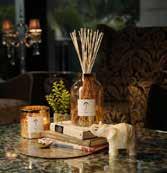

warmth and relaxation. Niche fragrance brands like Jo Malone, Culti Milano, and Nigerian brands like Abela by Scents of Africa are tapping into this sensory revolution — creating home fragrances that are layered, elegant, and moodspecific. Some even create customised scent blends for clients, turning your home into your own signature sanctuary.
Still, despite its power, scent remains the unsung hero of interior design. Maybe it’s because we can’t see it. Maybe it’s because most of us haven’t been taught to design with our senses beyond sight and touch. But once you start thinking about scent as part of your design plan, something clicks. Spaces begin to feel more immersive. More alive. More… you. And the best part? It’s not just for the rich or design-savvy. Whether you live in a studio flat or a six-bedroom mansion, everyone can benefit from a little scent styling. You don’t need a big budget — just a little intention.

